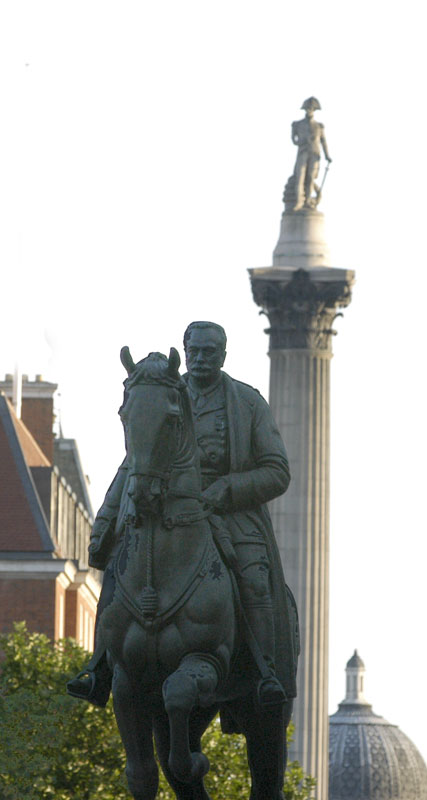|
CONTENT
Introduction
London
Ashton-under-Lyne
British war memorials
Women
Men
poor
The last war memorial
|
LONDON
A war memorial is something that we decide to describe as such - that is, war memorials have no specific defining characteristic. This means that we can also choose to describe any number of structures and places as war memorials. Our choice of name reflects a complex set of attitudes and beliefs. Many of today's war memorials were called 'peace' memorials when they were built. A naming that reflected a view of what the war had been about and an expectation of the benefits it was to bring.
For example the long stretch of road in Paris from L'arch de Triomphe to La Defence, which on its way commemorates many battles, has been called the biggest war memorial in the world.
Closer to home, the area from the Cenotaph at one end of Whitehall to the whole of Trafalgar Square at the other is dotted with statues of generals and monuments to war, to which new war monuments are being added. Does this not constitute one vast war memorial? Edwin Lutyens, the architect responsible for the London Cenotaph, thought that this whole area should be turned into a war memorial. Churchill thought that the town of Ypres should remain in its ruinous state and become a memorial. Unsurprisingly the Belgians did not take to the idea.
Complex meaning
The meaning of war memorials is complex and elusive. This may surprise many today but it would not have surprised people at the time most war memorials were built. They realised that memorials could be understood in different ways and that their ability to convey a particular meaning is far from reliable. Take a look at the Cenotaph in Whitehall and remove from your mind all that you have been told about it – what does it convey to you?
The ‘proper’ understanding of memorials requires a deliberate effort. Writing about the burial of the Unknown Warrior, the Manchester Guardian, forerunner of the present Guardian newspaper, notes that even though the grave has been completed physically, it still remained necessary to make ‘the greatest effort of all – to put into the chosen symbol all the meaning it should have’.
Before memorials could be the objects of ceremonial attention they had to be built. Building involved discussion about their purpose and meaning, which was carried out in public and committee meetings, in newspapers and in pamphlets. These discussions centred not on how to express or assuage grief, but how to express moral or political values.
|

La Deliverance, London.
From the Cenotaph to Trafalgar Square the concentration of military statues and war leaders makes this area one
big war memorial
haigh received xxx at the end of his time while oothers haigh funs
When thinking about war memorial think about what functions it server; what do those who decide to build it, pay and/or support it hope it will achieve.
|

